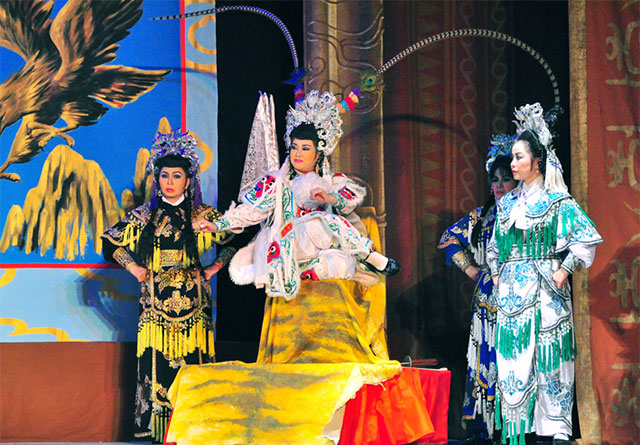
The acting seen in this theatre is a dramatic art form in which the actors make use of their technical mastery to describe the actions and states of mind of the characters. This type of acting is different from other styles which require the actors to give up their individuality to transform themselves into the characters of the play.
Tuong stage has a very concise symbolization. Only with some actors on the stage, the whole scene of the court with all the officials who are attending royal ceremonies could be seen, or two generals with some soldiers fighting also show a battle with hundreds of thousands of troops and horses fighting fiercely, and even a gourd of wine and four wooden cups also express a lowish banquet. It is a mistake to deal with Tuong without mentioning the art of making up. It is because just looking at a made-up face; we may guess the personality and social class of that character. For example, a canthsus drawn toward one's ears show that he is a great gentleman and hero. As for beards, a black, curly beard is for a fierce man, three-tuft beard for a gentleman; a dragon's beard for Kings and mandarins and for majesty; a mouse's whisker, a goat's beard and a fox's whisker for cunning and dishonest men. Beardless man must be students.
The gestures of characters on the stage are stylized with symbolization, which attract the viewers passionately. To a western-style drama, when a general rides a horse, it must be a real one or a horse-like costume; but, to an actor of Tuong, only a white, brown red or black whip also means many kinds of horses: black, sorrel or white. The actor of Tuong acts very concisely. Only with a whip, he is able to make the viewers passionate through delicate acting's with horses galloping or at full gallop, of which there are good-mannered or restive ones... With an oar, the actor of Tuong is able to show the viewers the boat fast sailing, wavering due to waves, making the viewers feel as through they were onthe boat.
The accompanying tomtoms in Tuong are very important, because they start the actor's sentiment; they bring the past time and space to the present; they unite the character's sentiment with the stage, and the actor with the audience. The art of Tuong in Vietnam includes those of painting, sculpture through the ways of making up, costumes and dance, pantomine, singing, saying through the actings of actors; as well as the combination of traditional musical instruments of Vietnam. The art of Tuong has raised the lofty view of desire to the true - the good - the beautiful (Chan - Thien - My) as well as the viewpoints of life of the ancients: Benevolence - Righteousness - Civility - Knowledge - Loyalty ( Nhan - Le - Nghia - Tri - Tin) through special characters who are benevolent and righteous. Tuong is one of the valuable pearls reflecting the rich and special culture of Vietnamese people.

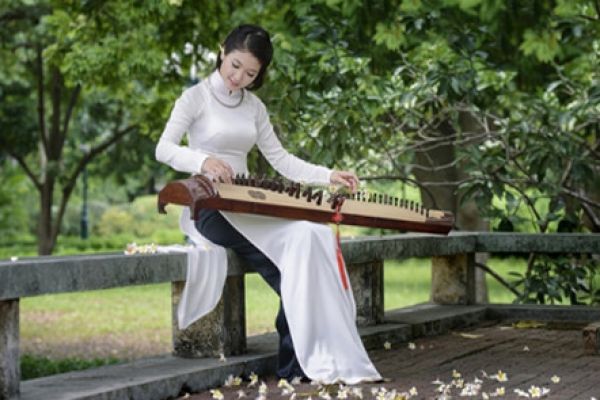


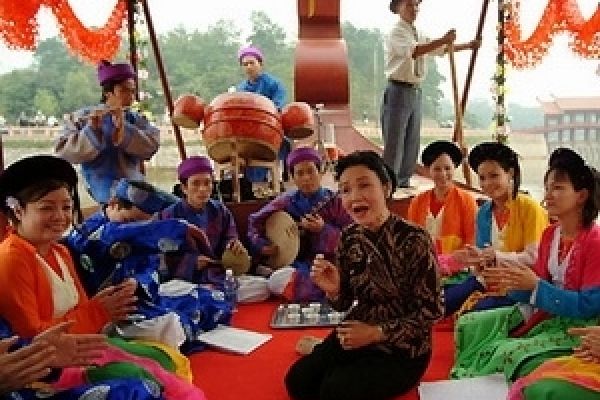
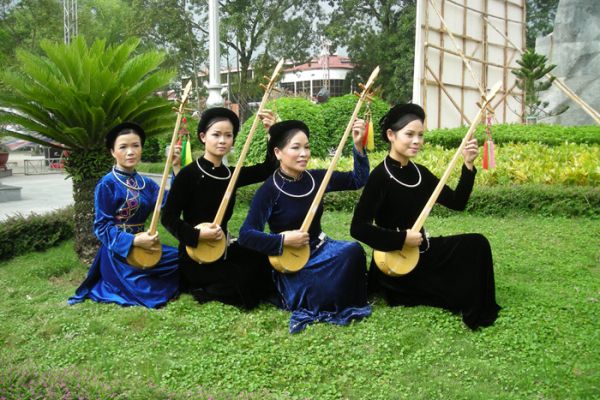
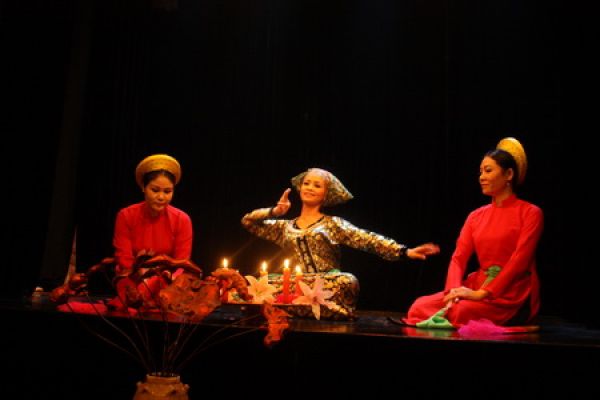


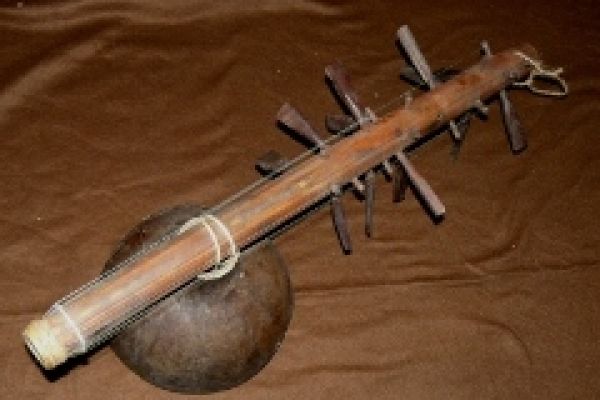
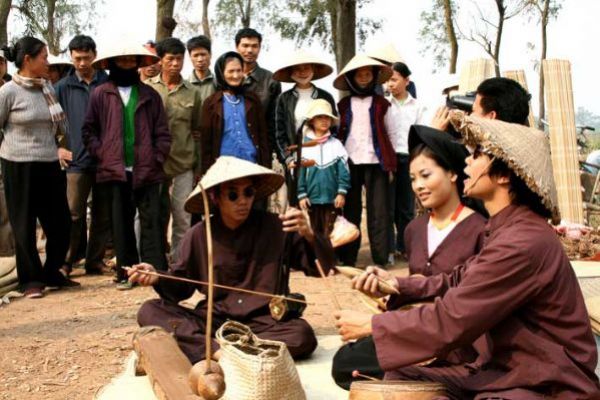


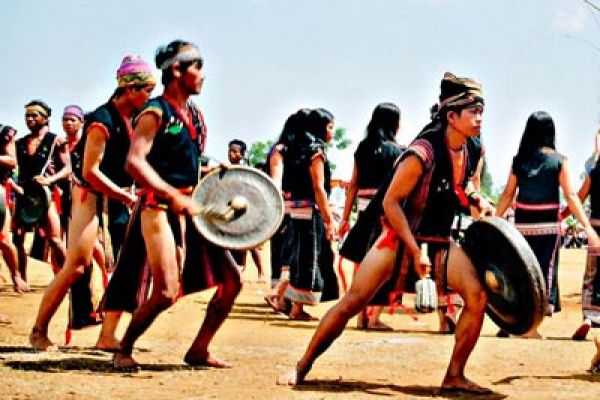
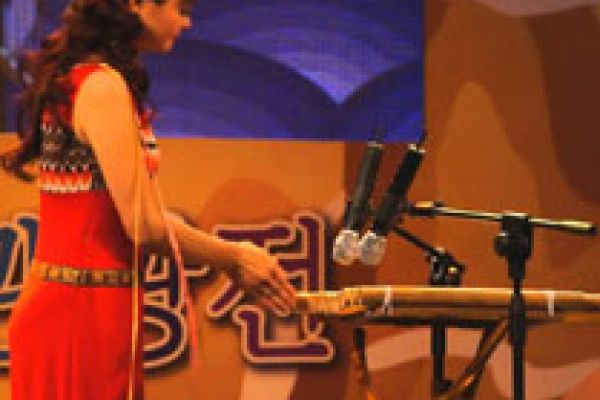
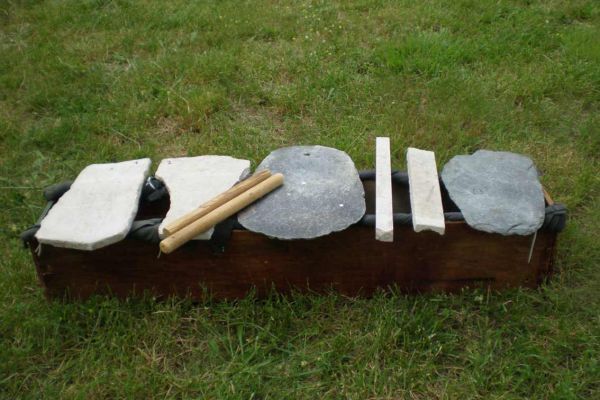
 Tags:
Tags: 